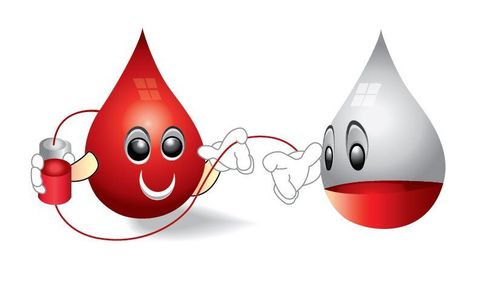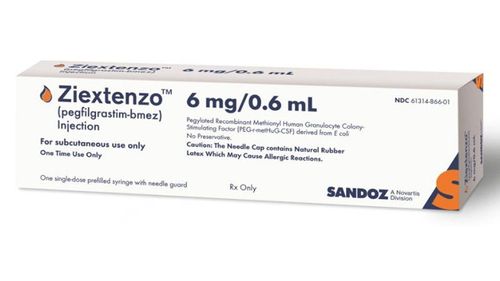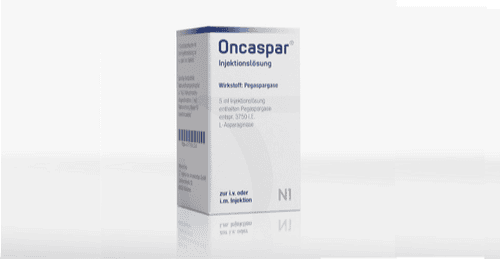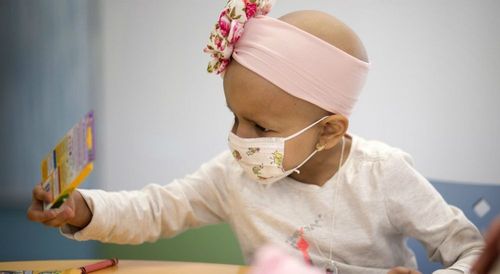This is an automatically translated article.
Treatment to relieve symptoms is an important part of the care and treatment of acute lymphoblastic leukemia (ALL) You should talk to your doctor about your symptoms, including any any new symptoms or a change in symptoms.
1. Signs of Acute Lymphocytic Leukemia (ALL) in Adults
People with acute lymphoblastic leukemia ALL may experience the following symptoms or signs. Sometimes people with ALL don't have any of these changes. Or the cause of a symptom could be a different medical condition other than cancer.
Fatigue Weakness Easy bruising Bleeding that doesn't stop easily Pale skin Red, fingertip-sized spots on the skin Weight loss Fever Fever Bone, back or abdominal pain Shortness of breath or trouble breathing Frequent infections or infections back Swollen lymph nodes, also known as enlarged liver or spleen glands In women, menstrual periods last longer than usual Dizziness Headaches Blurred vision Nausea and vomiting

Những người bị bạch cầu cấp tính dòng tế bào Lympho ALL dễ bầm tím
If you are concerned about any changes you experience, talk to your doctor. Your doctor will ask how long and how often you have this symptom, among other questions. This is to help find the cause of the problem, known as a diagnosis.
If you are diagnosed with acute lymphoblastic leukemia (ALL), treatment aimed at relieving symptoms remains an important part of care and treatment. This may also be called symptom management, palliative care, or supportive care. You should talk to your treating doctor about your symptoms, including any new or changed symptoms.
2. Risk factors for acute lymphoblastic leukemia (ALL) in adults
A risk factor is anything that increases a person's chance of developing cancer. Although risk factors often influence the development of cancer, most do not directly cause cancer. Some people with certain risk factors never develop cancer, while others have no known risk factors. Knowing your cancer risk factors and talking about them with your doctor can help you make more informed lifestyle and health care choices.
The cause of acute lymphoblastic leukemia is not known. In general, ALL is most likely to affect children and older adults. The following factors can increase a person's risk of developing acute lymphoblastic leukemia:
Age. Children under 15 and adults over 50 are more likely to develop leukemia Skin color: Whites are more likely than blacks to develop ALL for reasons not understood. Hereditary conditions. People with certain genetic conditions have a higher risk of developing acute lymphoblastic leukemia than the general population. These conditions include the following: Down syndrome Ataxia telangiectasia Li-Fraumeni syndrome Klinefelter syndrome Fanconi anemia Wiskott-Aldrich syndrome Bloom syndrome

Hộ chứng Down
High dose radiation. People who have been exposed to high levels of radiation may be more likely to develop ALL. This includes long-term survivors of the atomic bomb. Exposure to electromagnetic fields or high voltage power lines has not been shown to increase a person's risk of ALL. Cell phone use is not a known risk factor for leukemia. Viruses. Occasionally, acute lymphoblastic leukemia or specific types of lymphoma may be related to a previous viral infection. These infections include human T-cell leukemia virus-1 or Epstein-Barr virus. According to recent research, many young children who develop ALL may already have the genetic changes before birth that are hallmarks of leukemia, although it takes several years before the disease develops and causes symptoms.
It is estimated that in 2018 5,930 people of all ages (3,280 men and 2,650 women) in the United States will be diagnosed with acute lymphoblastic leukemia. One in four people diagnosed with ALL is an adult.
Advances in treatment have significantly extended the lives of people with acute lymphoblastic leukemia. The 5-year survival rate tells you what percentage of people live at least 5 years after cancer is found. The 5-year survival rate for people 20 years of age and older is 35%. The 5-year survival rate for people under 20 is 89%. However, survival rates depend on several factors, including the biology of the disease and a person's age.
To register for examination and treatment at Vinmec International General Hospital, you can contact Vinmec Health System nationwide, or register online HERE.
References: Cancer.net
MORE:
What is Chronic Lymphocytic Leukemia (CLL)? For the first time in Vietnam successfully treated T/NK cell lymphoma with immunotherapy What are lymphocytes?













